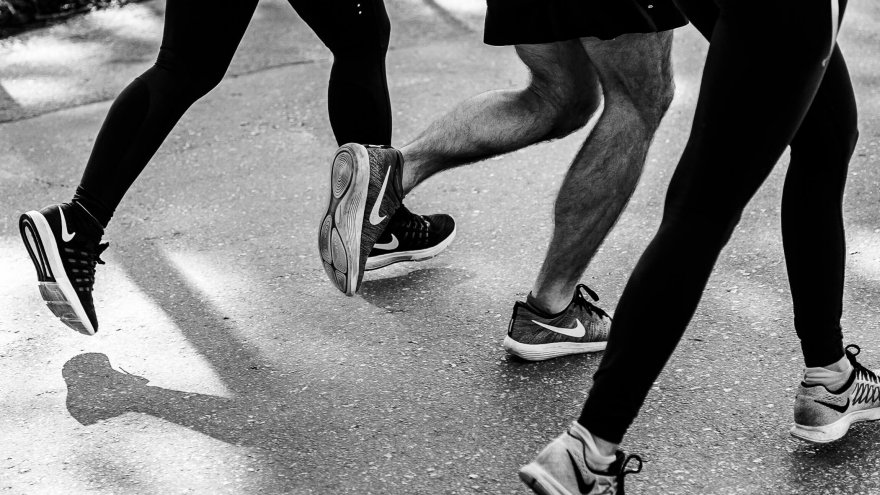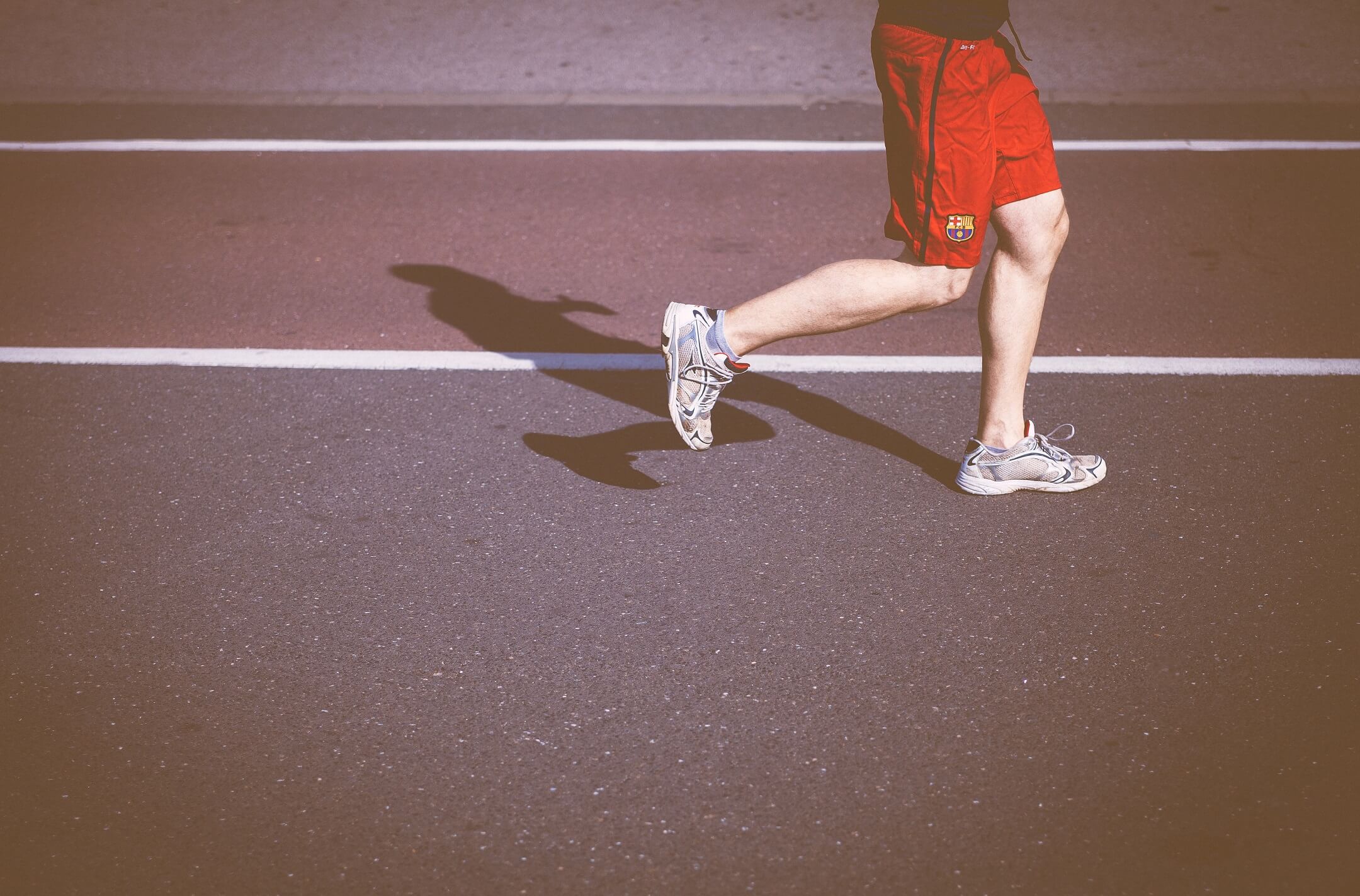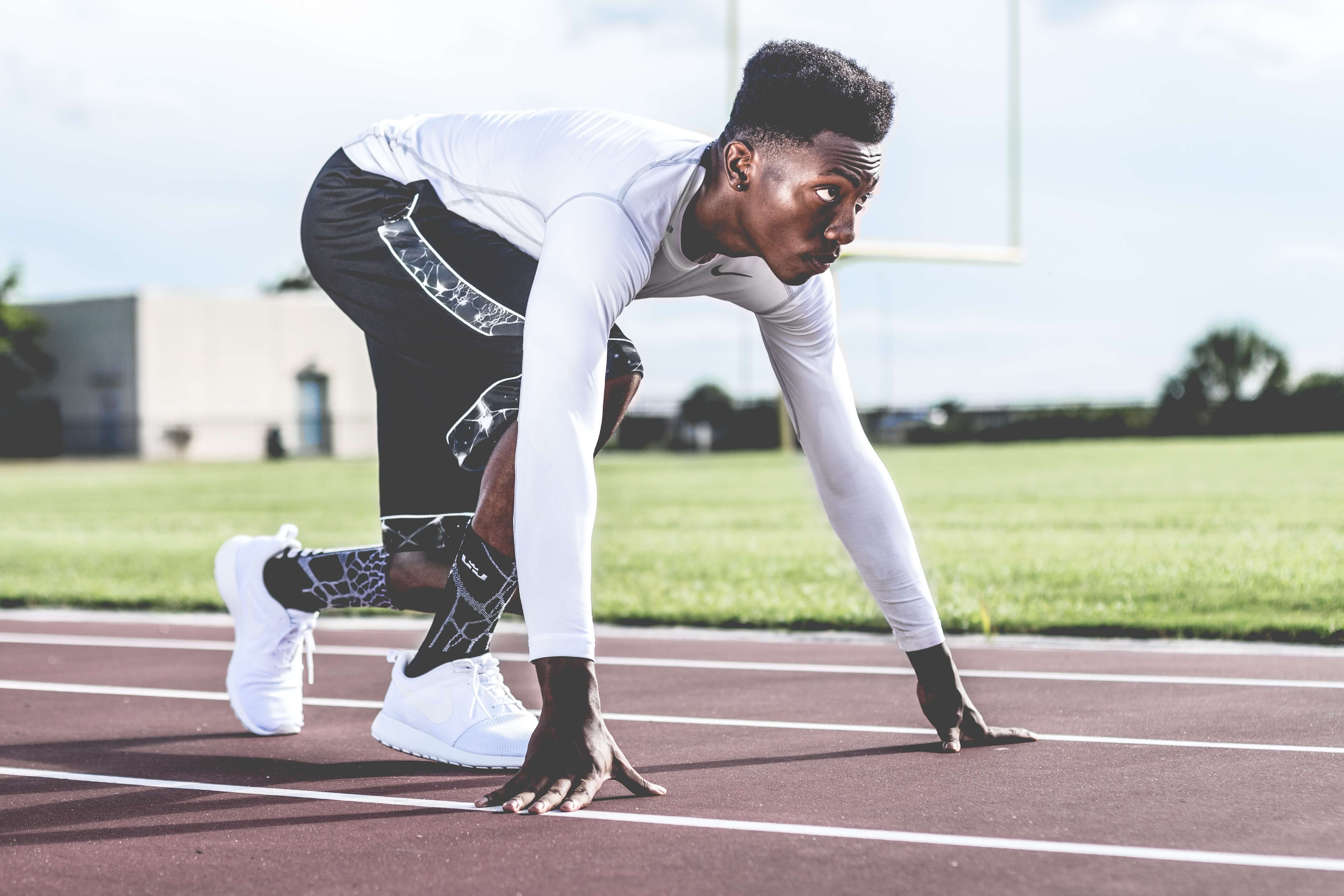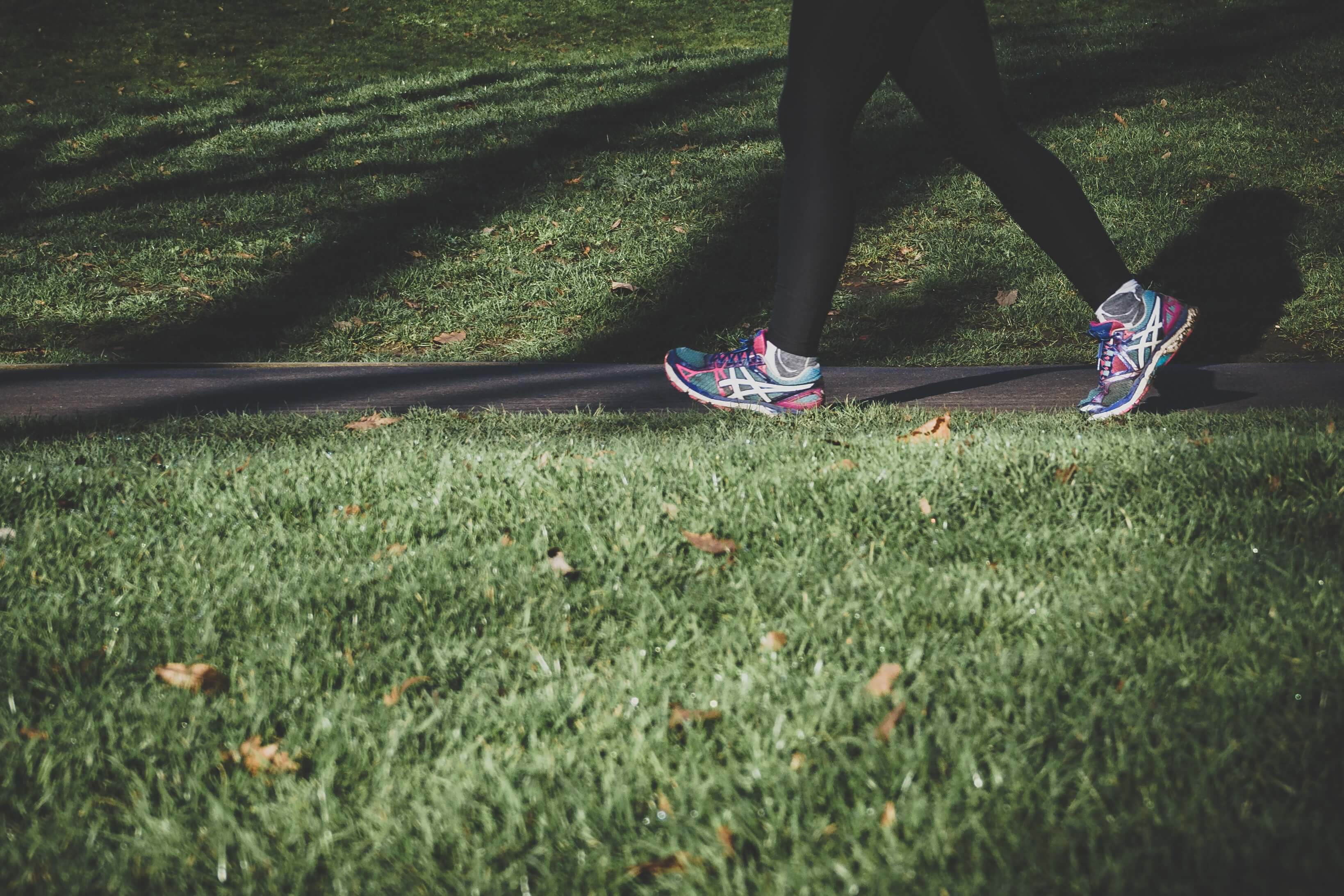What Your Foot Strike Says About You

A runner’s foot strike is as individual as a snowflake, and there are many perspectives from which it can be analyzed. You may want to take a closer look at your foot strike and what it says about your running style. In some cases adjusting parts of your foot strike pattern, such as your running cadence, can greatly improve your performance. Whether you are a sprinter, jogger, or long-distance runner, your foot strike is very important.
What is a foot strike?
A foot strike is the action of the foot landing on the ground when running. Your individual foot strike can be broken down into three main components:
- Your leg turnover or RPM, also known as cadence (how many times your foot strikes the ground in one minute)
- Where your foot strikes the ground in relation to your body
- What part of your foot is striking the ground (heel, forefoot, or midfoot)

What should your leg turnover be?
The ideal leg turnover is somewhere around 80-90 RPM. This means that each foot is striking the ground approximately 80-90 times for every minute you are running. Your RPM can depend on whether you are doing an easy jog, sprinting in a race, or your daily mid-distance run. Faster runners nearly always have a higher RPM. The range of an optimum leg turnover can vary by runner and speed, however, studies show that the optimum RPM is generally 90RPM. You can count your RPM or steps per minute in your head as you run, you can use a running or cadence watch, or insert a footpod like RunScribe into your shoe to calculate your RPM and other running biomechanics information.
Where should you put your foot on the ground?
While there is still some debate on what part of your foot is the best part to strike the ground, it is generally agreed that the best place to place your foot on the ground when running is directly under your body. If you look down as you run, you should only be able to see your foot for a second before it disappears under your body.

If your foot strikes the ground too far ahead of your body, it can cause several issues:
- There will be a braking effect that will slow you down
- Your foot will be on the ground longer, while it waits for the rest of your body to catch up
- Throwing your leg out straight with the braking effect will lead to a heel strike with maximum impact and can provoke injury
If your foot strikes the ground too far behind your body, you will lose much of your natural force and spring in your step. Running with a foot strike that is behind your body can also invite hamstring and other injuries.
Types of Foot Strikes
Foot strikes are normally categorized into three different areas of the foot, although runners can and do range across a wider and more subtle spectrum.
Heel Foot Strike (RFS)
Also known as “rearfoot”, heel strike is the most common type among runners, accounting for anywhere from 70% – 90% of runners. However, it’s also the least recommended. Why?
- You are landing on the middle to outside of your heel, below your ankle
- Your ankle is dorsiflexed (heel on ground, toes point up)
- As you land, your ankle begins to plantarflex (heel off the ground, toes pointed slightly down)
- Towards the end of this type of foot strike, your arch will begin to stretch/flatten

Striking the ground with your heel creates an instant impact that sends a shock wave through your skeletal system. This is known as an impact transient, which is an instantaneous large force. The impact transient you receive from a heel strike is significant. This can be the cause of many common running injuries, especially with the extra force it puts on your knees.
Fore Foot Strike (FFS)
This type of heel strike is the most prevalent in recommended foot strike styles, for several reasons including those listed below. It’s also the most common in ‘faster’ running – many sprinters and middle distance runners land on their forefoot.
- You are landing on your toes or the outside of your foot furthest from your heel
- Your ankle is plantarflexed (heel off the ground, toes point slightly down)
- As you land, your ankle begins to dorsiflex (heal moving towards ground, toes pointing up)
- Towards the end of this type of foot strike, your arch continues to stretch/flatten
When you strike the ground with your forefoot, you are allowing the full impact of the strike to travel through the joints of your foot and then up your legs. This slows down and weakens the impact. This style offers almost no impact transient.

Mid Foot Strike (MFS)
Considered to be the midway point between a heel strike and a forefoot strike. Although the data that is available is still unclear on the “best” foot strike, MFS and FFS are generally deemed to be the preferred foot strikes.
What Affects Your Foot Strike
Your foot strike can change depending on the ground surface.
“The foot strike can change with speed and terrain,” says Andrew Peabody, an Ironman certified coach and multiple Ironman podium finisher. If you are running uphill, you may notice you have more of a forefoot strike. Downhill you may note you are running with more of a heel strike. On a springier surface such as grass, you will likely have a tendency to strike with your forefoot, and a very rigid surface like concrete may cause you to heel strike.
Your foot strike can depend on your body.
Lighter, heavier, taller, shorter, sprinter, jogger– all of these things can affect your foot strike. For example, the more you weigh, the more impact transient. There is not one correct answer for every body, which is why it’s recommended that you test yourself at different speeds, on different terrains and fine tune the foot strike that is right for you.
The shoes you wear can significantly affect your foot strike.
A cushioned heel can greatly reduce the impact loading rate for a heel striker. There are many benefits to choosing the running shoe that is right for you and your foot strike.
Sources
Latest Articles
 Is Running on a Treadmill Easier Than Running Outside?Runners have their own preferences, whether it is treadmill running, running outside on the road, or exploring trails. So...
Is Running on a Treadmill Easier Than Running Outside?Runners have their own preferences, whether it is treadmill running, running outside on the road, or exploring trails. So... Is It OK to Use Trail Running Shoes on the Road?While trail running shoes can be used on roads, especially in situations where a runner encounters mixed terrains or pref...
Is It OK to Use Trail Running Shoes on the Road?While trail running shoes can be used on roads, especially in situations where a runner encounters mixed terrains or pref... How to Fix Sore Quads After Running?Rest, ice, gentle stretching, and over-the-counter pain relievers can help soothe sore quads after running. Also, ensure ...
How to Fix Sore Quads After Running?Rest, ice, gentle stretching, and over-the-counter pain relievers can help soothe sore quads after running. Also, ensure ... 10 Fruits With The Most Electrolytes to Replace Sports DrinksThese fruits are high in electrolytes such as potassium, magnesium, and calcium, essential for hydration, muscle function...
10 Fruits With The Most Electrolytes to Replace Sports DrinksThese fruits are high in electrolytes such as potassium, magnesium, and calcium, essential for hydration, muscle function...

